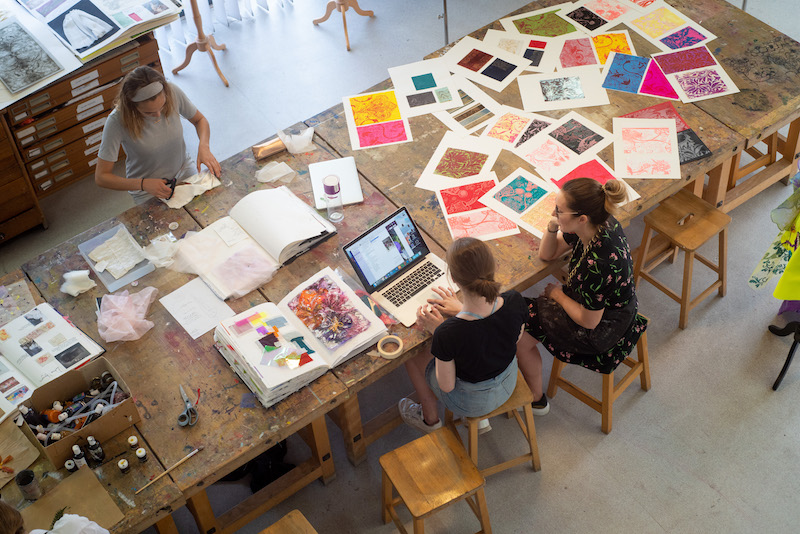Why creativity and innovation are so important
Posted on 24th Dec 2019 in School News, Which School?

Caroline Jordan, Headmistress at Headington School, considers what it takes to thrive in a technological age...
What differentiates us from robots? This may sound like a stupid and, perhaps, irrelevant, question, but as the world of technology advances at a sometimes bewildering rate, it could in fact be the most important question of all.
The advance of robots, machine learning and artificial intelligence is already changing the job market beyond what we could have imagined a few short years ago. Increasingly, jobs which needed a skilled person in post can be automated. Soon, there may be very few things which machines cannot do at least as well, if not better – and more cheaply – than their human counterparts. The idea that a robot could put you out of a job would seem incredible were it not already happening all over the world.
In education, this is something that needs to be at the forefront of all our minds. If, as PwC predicts, as many as 30 per cent of UK jobs are at risk of being taken over by robots and AI by 2030, how do we prepare the children in our charge for this? How does this change what we need to teach and how our students need to learn?
There are some skills which are, however, uniquely human. Creativity and creative thinking appear to be beyond the capacity of artificial intelligence. These, then, are the skills we need to be focussing on developing. We already know how much employers value analytical thinking, innovation, creativity and originality. These are things which differentiate good candidates from excellent ones. In the future, this combination of skills may be what makes a human ‘worth’ employing over a robot.
When we think about the jobs of the future – and most of these do not yet exist, with an estimated 65 per cent of children entering primary school today destined to work in careers we can’t envisage – it is clear that creativity has to be our defining skill. Creativity is no longer the remit of a small and specialist group of people, creatives, or artists, or thinkers, it is an essential skill which we will all need to succeed in our rapidly changing world.
How, then, do we develop these creative thinking skills? At Headington, this is something we have been thinking about for some time and last summer we broke ground on a new Creativity & Innovation Centre. This will become the new home for Fine Art, Sculpture, Photography, and Fashion Textiles at Headington, as well as a hub for cross-curricular learning with a focus on sustainability, enterprise and technology. We want to create the conditions that will foster creativity and ensure each girl lives up to their creative potential. Instead of defining themselves as ‘arty’ or ‘creative’ or ‘good at Science’ to the exclusion of other subjects, we want our girls to look at how skills and approaches from all subjects feed into each other to produce more interesting outcomes. How can we take what or how we learn in one subject and use it to make another area of learning more effective and successful? A fantastic new learning environment, exposing girls to new ideas and techniques and using purpose-built, state-of-the-art equipment and classrooms will help facilitate this but ultimately this approach needs to be part of everything we do, whether in our new centre or anywhere in the School.
Earlier this year, some of our younger girls combined Science, Art and Computing as they researched, designed and built model flying planes. While a computer might be able to follow instructions perfectly and execute a ‘text-book’ model plane, it takes a human touch to come up with something new, to take a wider view and to be truly creative. Young minds are uniquely placed to do this – they haven’t yet accepted the orthodox approach and so are really very good at coming up with something original and fresh. This kind of cross-curricular creative learning is something we will be doing more of to help develop these skills further. It is our job to cultivate these skills, attitudes, behaviours and experiences in our learners. We will do this by encouraging girls to question, explore and investigate how things work and to ignite their creative spark. This means taking risks, getting things wrong, adapting and innovating, building resilience and growth mindset as we do so – more skills we know employers hugely value.
Education has moved some way beyond learning facts and processes by rote and, while there will always be a value to having a good knowledge base, the fact most of us have access to vast quantities of information at our fingertips means this is far less significant than it once was. All of us need to think creatively to prosper in a new digital world.
This article first appeared in the 2020 edition of Which School. You can read the e-guide here: